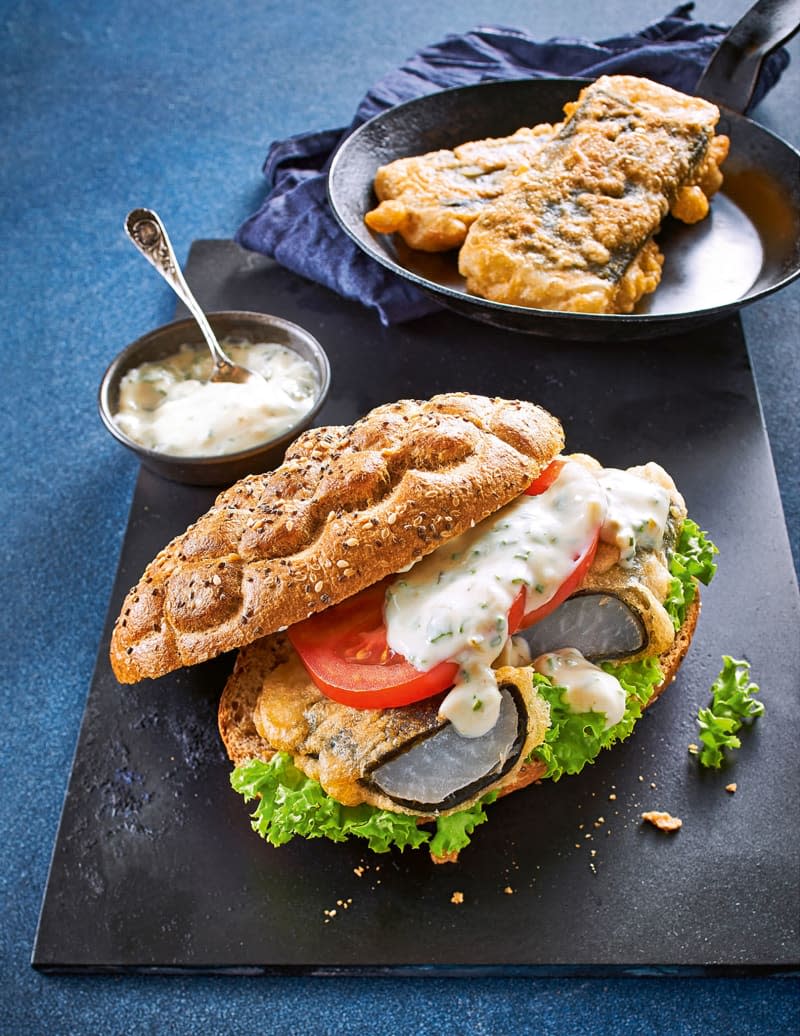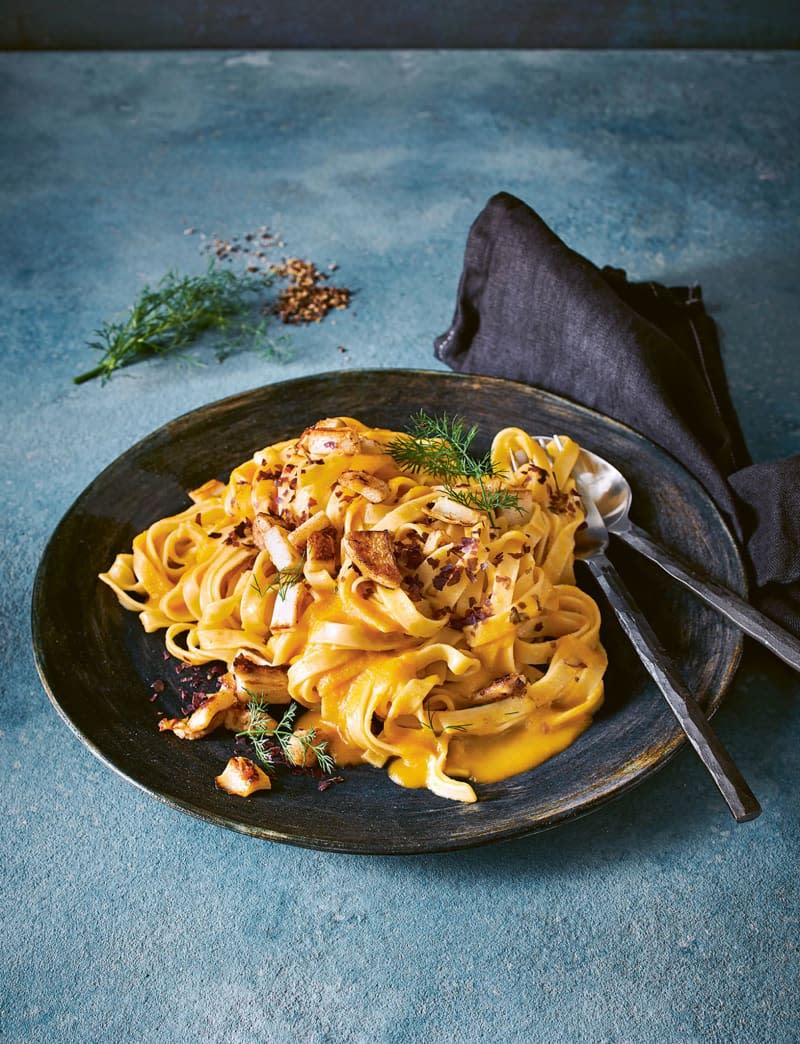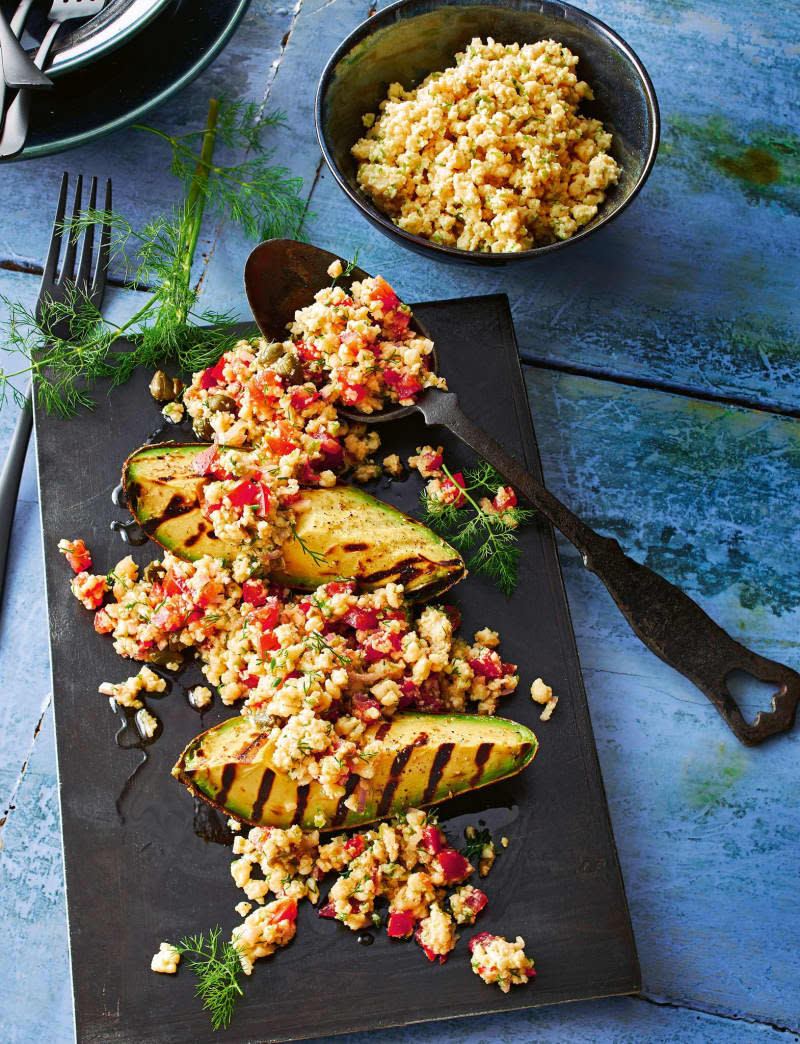You won't believe it's not fish: Four great vegan seafood recipes

Born on the German Baltic coast, Alexander Flohr grew up eating fish. When he became vegan, suddenly cod and herring were off the menu. That is until the food writer and YouTuber started experimenting with ingredients.
"I came to the conclusion that fish tastes like algae because it feeds on it," says Flohr. And if algae brings that typical fishy taste, it can do the same in vegan dishes.
But it when it comes to making vegan seafood, it's about more than just the taste: "How can I match the structure, consistency, silkiness and appearance of fish?" Flohr asked himself.
Next, he went shopping, picking out white radish, different kinds of mushroom, jackfruit, and more.
Making fried fish from radish
Flohr has come up with a range of different recipes, for example, fried fish made from white radish. "It's incredibly similar," he says about the veg. "When prepared properly, it has a glassy consistency like fish."
Wrap some algae or seaweed around it, add some seasoning and breadcrumbs, and put it in a bun with some vegan tartar sauce - "it's like biting into a fish sandwich."
Other ingredients the food writer likes to use for making vegan seafood include tofu, aubergine, jackfruit, mushrooms and artichoke hearts. "Tofu can be marinated, pureed, deep-fried or fried in a pan," says the chef. "A good tofu has a silky, white, smooth consistency and is excellent for fish alternatives."
Algae are a great flavour enhancer and have the advantage that they provide iodine, just like real fish. Nevertheless, depending on the variety you use, you should keep an eye on the amount of iodine, says Jana Fischer from a consumer advice centre in Hamburg. "For some products, especially concentrated ones, it says on the packaging how much iodine they contain."
Take seaweed flakes, for example: depending on the type, you shouldn't have more than one to two tablespoons per day, says Fischer.
Real seafood is high in omega-3 fatty acids - healthy fats that are good for your cells, especially those in your brain. Since they are missing in plant-based alternatives, the nutrition expert recommends using rapeseed or linseed oil when preparing vegan seafood.
"They have a good fat composition. You should also pay attention to what kind of oil is used in ready meals and products."
Carrot lox
Fischer's go-to fish substitute is vegan salmon, made from thinly sliced and marinated carrots. "Tear some nori seaweed into very small pieces or grind it into flakes with a blender," she explains.
Next, make a marinade mixing the seaweed with some oil, a little soy sauce, vinegar, salt and smoked paprika powder and soak the carrots overnight. Serve on a bun with horseradish.
"The marinade lends the carrots a fish-like flavour," says Fischer.
Heart of palm lobster and soy tuna
One of Flohr's favourite vegan seafood recipes is lobster tagliatelle, with heart of palm serving as a fish substitute. "When you bite into it raw, it's like asparagus. That's why you first have to sauté them in margarine and add lemon juice for acidity," explains the food writer. "You end up with a white, tender meat that tastes and looks like lobster."
Combine the heart of palm with butternut squash and spring onions, season with mustard, ketchup, white wine, brandy and dulse - or red - seaweed flakes.
Another favourite of Flohr's is soy tuna, made from soya strips.
For 375 grams of tuna substitute, you need 150 grams of soya strips.
"Rinsing the soy with plenty of cold water after soaking it in 1 litre of boiling water for 10 minutes helps to get rid of its strong flavour," says the food writer. Then squeeze the soy strips well and chop them very finely until you start to see fine fibres appear.
Mix the strips in a bowl with half a teaspoon of salt, a tablespoon of Nori flakes, three tablespoons of olive oil, half a teaspoon of garlic powder, a teaspoon of onion powder, a grind of pepper and the juice of a quarter of a lemon.
Press the mixture firmly into the bowl and let it sit, covered, for 15 minutes - and you'll be left with a base for making patties or a ready-to-go spread.
Going beyond the original
Ultimately, you can always keep adding to the maritime-vegan dishes and develop them further. "It's not about copying a product one-to-one, but about having something different and delicious on your plate - even as someone who's not vegan," consumer expert Fischer says.
Flohr likes to compare vegan fish dishes with an electric car. "When I'm in the car, I might miss things like the sound of the engine or the cylinders vibrating." But nowadays an electric Porsche gets up to the same speed as a petrol engine. "That's how I see it with fish alternatives - of course it's not exactly the same as fish, but it's still a great alternative."



